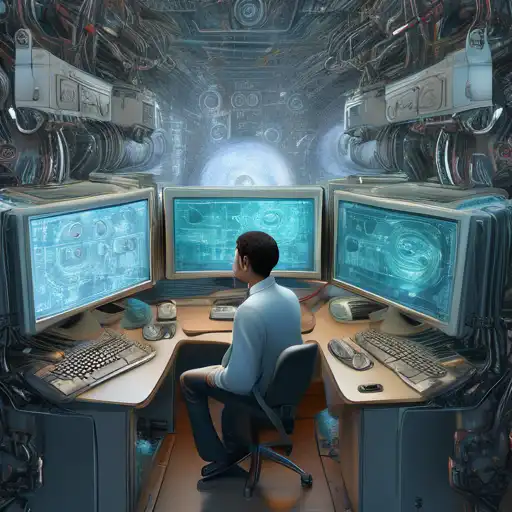Empowering Machines with Sight: The Evolution of Computer Vision
In the realm of artificial intelligence, computer vision stands as a groundbreaking technology that enables machines to interpret and understand the visual world. By leveraging digital images from cameras and videos and deep learning models, machines can accurately identify and classify objects—and then react to what they 'see'.
The Foundation of Computer Vision
At its core, computer vision is about pattern recognition. Teaching a computer to recognize a cat in a photo, for instance, involves feeding it thousands of cat images. Over time, the system learns to identify the features that make up a cat. This process is powered by machine learning and, more specifically, deep learning, which uses neural networks to mimic the way the human brain operates.
Applications Transforming Industries
Computer vision is not just a futuristic concept; it's already here, transforming industries in real-time. From healthcare, where it aids in diagnosing diseases from medical images, to retail, enhancing customer experiences through augmented reality, the applications are vast. Autonomous vehicles rely heavily on computer vision to navigate roads safely, while in agriculture, it helps monitor crop health from above.
- Healthcare: Early disease detection through image analysis.
- Retail: Virtual try-ons and inventory management.
- Automotive: Enabling self-driving cars to perceive their environment.
- Agriculture: Drones monitoring crop health.
Challenges and Future Directions
Despite its advancements, computer vision faces challenges such as understanding context and dealing with poor lighting or obscured objects. However, with the continuous improvement in AI algorithms and computational power, the future of computer vision is bright. Researchers are working towards more sophisticated models that can understand scenes in a way that's closer to human perception.
As we move forward, the integration of computer vision with other AI technologies will unlock even more possibilities, making machines not just see, but understand and interact with the world in ways we've only begun to imagine.
Getting Started with Computer Vision
For those interested in diving into computer vision, starting with the basics of Python programming and familiarizing oneself with libraries like OpenCV and TensorFlow is recommended. Numerous online resources and communities are available to support beginners on their journey.
Computer vision is a fascinating field that bridges the gap between the digital and physical worlds. By teaching machines to see, we're opening up a new frontier in technology that has the potential to revolutionize how we live, work, and interact with our environment.
